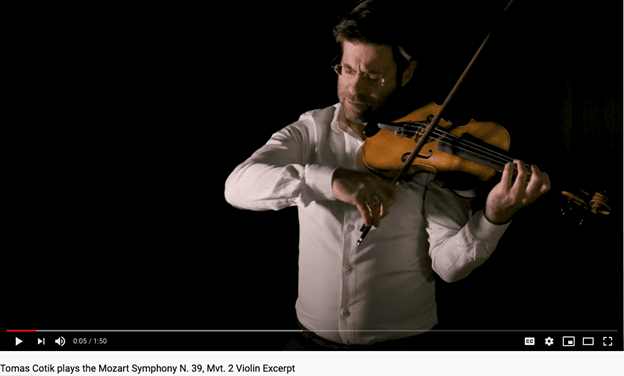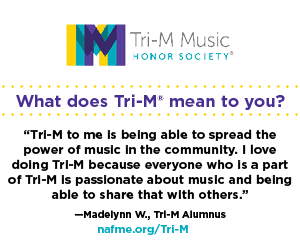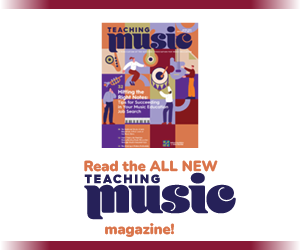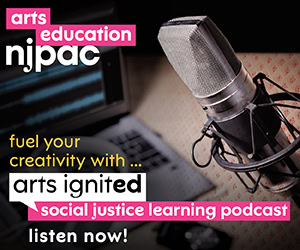NAfME BLOG
Resources for Learning the Violin Audition Excerpt: Mozart Symphony No. 39, Mvt. 2

/ News Posts / Resources for Learning the Violin Audition Excerpt: Mozart Symphony No. 39, Mvt. 2
Resources for Learning the Violin Audition Excerpt:
Mozart Symphony No. 39, Mvt. 2
By NAfME Member Tomás Cotik
Copyright © by Tomás Cotik – All rights reserved.
The April 2021 issue of Teaching Music included an article by Tomás Cotik on guidelines for recorded auditions. This is article five of six supplementing that article.
Below, you will find a brief introduction about the piece followed by a couple of recommendations of orchestral recordings and a list of concise advice that focuses on solving the usual problems that I have seen students confront in terms of rhythm, bow strokes, articulation, dynamics, vibrato, intonation, and phrasing when working on this excerpt. Please take any advice only as a guide; any recommendation or list of typical tendencies does not apply to every student. Slow, mindful practice, continued work on the basics (Intonation, Rhythm, and Sound), recording yourself regularly, and feedback from a teacher is at least as important! At the end of the document, you will find a score with the fingerings and bowings I used in the video as well as the orchestral score of the excerpt.
Watch my own video recording of this excerpt on YouTube.
Background
In the summer of 1788, three years before his death, Mozart was struck with a renewed interest in writing symphonies. His Symphony No. 39 is the first of a set of three symphonies, in fact, the last set he ever composed. This final trilogy is said to “[stand] apart from [Mozart’s] previous symphonic repertoire in innovation, emotion, increased dissonance, and profound content,” due to his focus on personal expression rather than the demands of the public. The slow movement of Symphony No. 39, Andante con moto, is written in an abridged sonata form (no development section) and features transformation of the themes through tone, dynamics, and scoring rather than through motivic development.
Listen:
Follow along with the full score as you listen to various recordings. A few examples:
- Listen to this video of Marriner with the Academy of St. Martin in the Fields.
- And this one of Bernstein with the Wiener Philharmoniker.
- If you are curious about a historical approach, check out this recording of Christopher Hogwood with the Academy of Ancient Music.
Rhythm:
- Practice with a metronome using different subdivisions: sixteenths, quarter notes, one click per bar.
- Make sure to also count/subdivide during the rests.
- Subdivide the dotted rhythms. Practice playing all sixteenth notes to experience the subdivision more directly. Record this and then play along with the original rhythm.
- The two dotted-sixteenth notes in the motives need to be equally long. Use vibrato on both.
- As an exercise, sometimes practice the rhythm as a triplet and other times over-dot it to really feel the difference.
- Don’t alter the rhythm as you phrase the music.
- Be cautious about the eighth notes before the rests—don’t play them too long. They could be fuller though in Forte, starting at measure 30.
- The second of two eight notes shouldn’t be longer than the first.
- The 32nd upbeat to measure 32 should be equally long as the 32nd upbeat to the second beat of measure 32, and so on in the following bars.
Bow Stroke:
- Most of the time, you will need to start from the string. The beginning of each phrase needs to speak clearly. Starting from the string helps to precisely time the start of the note and to keep the bow stroke controlled and consistent. When playing with other musicians in a tutti section, it’s important to start absolutely together.
Articulation:
- Make the 32nd upbeat to measure 32 (and in similar figures) speak by playing it from the string.
- Also make sure that the first 64th of the group in the upbeats to measures 32 and 34 speak.
Dynamics:
- The dynamic contrast doesn’t need to be extreme in measure 30.
- Keep it elegant.
Intonation:
- Play the “low 4” really low.
- Keep your left wrist straight, the fingers in shape (knuckles somewhat parallel to the fingerboard) and the elbow inside.
- Beware of getting sharp.
- Really differentiate between tight leading notes and wide major seconds.
Vibrato:
- Use vibrato throughout and don’t neglect vibrato on the 4th finger.
- Keep a narrow vibrato on the quarter note arrivals (often 4th fingers).
- In measure 15, make sure that the 32nds speak well. Trying to vibrato them will help with the expression of those leading tones.
Phrasing:
- Don’t accent the last note of the phrases when playing Mozart.
- Make sure not to accent the B-flat downbeat in measure 8 too much. It’s the highest pitch so far, a long note, and downbow: it will already have more than enough presence.
- Choose a tempo that is not too slow. The movement is marked “Andante con moto” and should be felt in 2 beats per measure.
- After the double bar, sing the violin II and cello parts in your head. They precede and continue the one bar phrases the first violins played.
- Take care to not create a swell on the quarter notes.
Mozart Symphony No. 39, Mvt. 2 – Violin I
Mozart Symphony No. 39, Mvt. 2 Score
Read parts one, two, three, and four.
About the author:
Hailed by Michael Tilson Thomas as “an excellent violinist,” Dr. Tomás Cotik was a first-prize winner at the National Broadcast Music Competition in his native Argentina in 1997, and the winner of the Government of Canada Award for 2003-2005. An avid recording artist, Dr. Cotik has recorded fifteen CDs for Naxos and Centaur Records, which have received enthusiastic reviews from publications such as Gramophone, Fanfare, American Record Guide, Downbeat, and MusicWeb International. Dr. Cotik was a rotating concertmaster with the New World Symphony and has performed hundreds of recitals and chamber music concerts across the globe. Committed to passing on his passion for music, Dr. Cotik was appointed Assistant Professor of Violin at Portland State University in 2016. He previously taught at West Texas A&M University, Florida International University, and at the University of Miami’s Frost School of Music. His articles about pedagogy have been published in renowned international publications such as The Strad, the American String Teacher Journal, and the American Music Teacher Journal.
E-mail: tcotik@pdx.edu
Website: www.tomascotik.com
Did this blog spur new ideas for your music program? Share them on Amplify! Interested in reprinting this article? Please review the reprint guidelines.
The National Association for Music Education (NAfME) provides a number of forums for the sharing of information and opinion, including blogs and postings on our website, articles and columns in our magazines and journals, and postings to our Amplify member portal. Unless specifically noted, the views expressed in these media do not necessarily represent the policy or views of the Association, its officers, or its employees.
March 19, 2021. © National Association for Music Education (NAfME.org)
Published Date
March 19, 2021
Category
- Ensembles
Copyright
March 19, 2021. © National Association for Music Education (NAfME.org)




